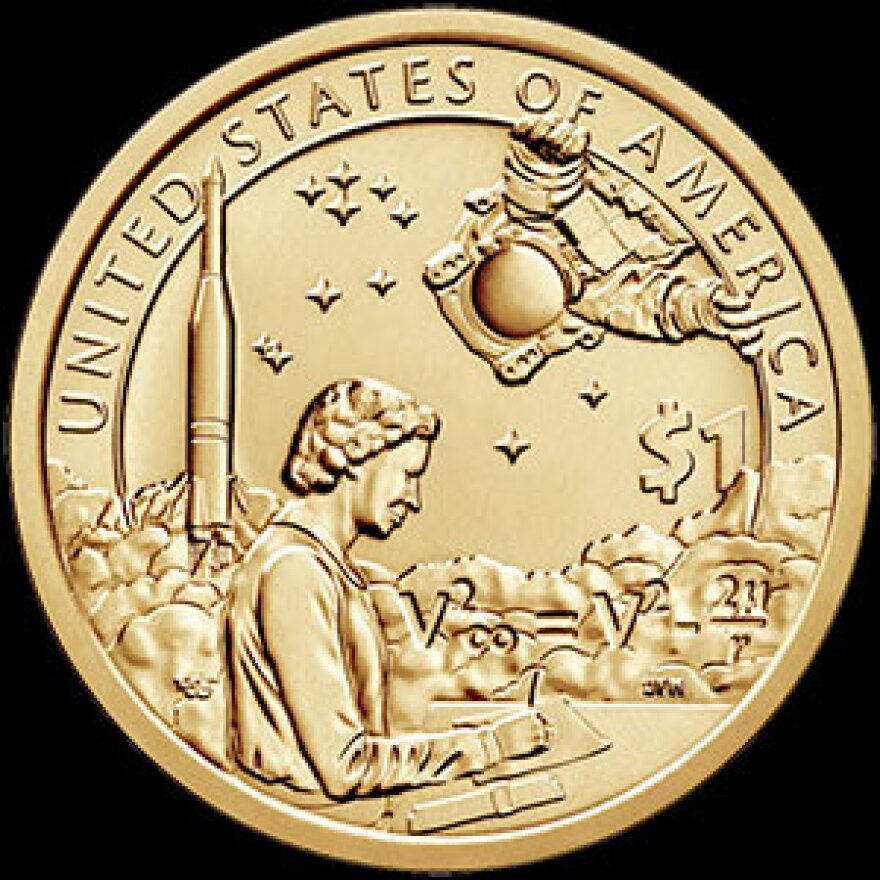An APR news feature
Saturday is noteworthy for different reasons. It depends on who you talk to. For kids in Alabama and around the country, it’s Halloween. For fans of the U.S. space program, it’s something else. It was twenty years ago this Saturday that a three person crew blasted off for the first mission aboard the International Space Station. Men and women from the United States, Russia, Europe, Japan and other nations have been there ever since.
If you want to know about it’s like to be on the International Space Station, you can always ask John Herrington.

“So, I remember being on the end of the space station, hanging on by a thumb and a forefinger, I kid you not, looking out, not down on the Earth, but across the Earth out I the vastness of the universe," Herrington recalled. "(I was) thinking for the first time in my life where I could look out, and that there’s nothing between me and whatever else is out there."
If that’s not enough, there’s always Jim Reilly.

“I was looking at it, and it was just hanging in this black velvet environment, and so there’s nothing to see but this thing, still lit up by the sunlight," said Reilly. "The sun hadn’t set on the station yet.”
When it comes to the International Space Station, both Herrington and Reilly have the benefit of having been there. They were both NASA astronauts. Herrington flew to the orbiting outpost in 2002. Jim Reilly’s first visit was the year before in 2001.
Both men hung up their spacesuits years ago. Reilly retired from NASA in 2008, and Herrington three years before that. Of course, that doesn’t mean either man has stopped talking about space. Herrington is a member of the Chickasaw Nation. He was also the first Native American in space. His job was to install part of the space station spine-like truss. When he gives talks like the one during the Moundville Native American Festival in Tuscaloosa, he explains how his Native American heritage figured into his work in orbit. Specifically, Herrington’s referring to those black and white pictures you may have seen of men building New York City skyscrapers in the 1930’s.
“The majority of those high altitude ironworkers were Native American," said Herrington. "Yeah, Mohawk, Akwesasne…that were working in those high steel structures, and here I was a high steel structure guy working in space, and kind in honor of those people who came before me.”
Of course, they didn’t have the view of Earth that Herrington had during his three spacewalks. He says he remembered one piece of advice from veteran spacewalker Jerry Ross who helped construct the first part of the space station.

“And Jerry told me one day, you have to sit back at some point in your spacewalk, and take it all in," Herrington recalled. "And don’t take a picture of it, because it will be far more vivid in memory than any picture will ever do.”
James Reilly told a similar story following a recent visit to the University of Alabama campus. He’s head of the U.S. Geological Survey now, but still likes talking about his days at NASA. We caught up with him ZOOM. One of his strongest memories of the International Space Station was the elbow room. Reilly says inside the Space Shuttle’s crew compartment, there wasn’t much.
“It’s pretty cramped. It’s like putting an entire family in a large walk-in closet,” he said.
Reilly says after opening the hatches between the shuttle and the space station, the orbiting outpost’s laboratories and crew compartment form a line stretching three hundred feet in front of you.
“And you can literally put your arms out in both directions and you won’t touch either side. It looks huge, it looks gigantic when you first get in there.”
That may sound nice, but Reilly says there’s a downside.

“You can really get lost in there. If you go around the corner, you can be upside and backwards and not know exactly where you’re going, which is one of things we had to consider when we designed it," he said.
John Herrington flew to the space station on his only Space Shuttle Mission in 2002. Jim Reilly got to go a second time in 2007. That’s where Reilly’s perspective on the Space Station is a little different. On his first mission in 2001, the outpost had one set of big solar panels, a U.S. built laboratory, and two Russian crew cabins. When he got there the second time six years later, Europe and Japan has added labs, and there was a second set of solar panels. Reilly says the inside had changed too.
“People were living in it, with all things that go with how people live," rcalled Reilly. "There were personal items in their sleep stations, there were books, there was stuff everywhere.”
John Herrington may not have the benefit of a second trip to the Space Station. But, one remembrance of his single flight can be found jingling in someone’s pocket.

“A couple of years ago, I heard something from the U.S. Mint about this coin,” said Herrington.
He was referring to plans by the Mint to strike a one dollar coin honoring Native American culture. They just didn’t tell him he’d be on it.
“They said it was dedicated to the space program, and a suited astronaut like John Herrington. A native American like John Herrington. Well, I’m the only one, so I guess it’s kind of me,” he recalled.
Herrington’s is depicted in the upper right, in his spacewalking suit, outside the International Space Station. The outpost’s first full time crew blasted off twenty years ago a week from this Saturday.


